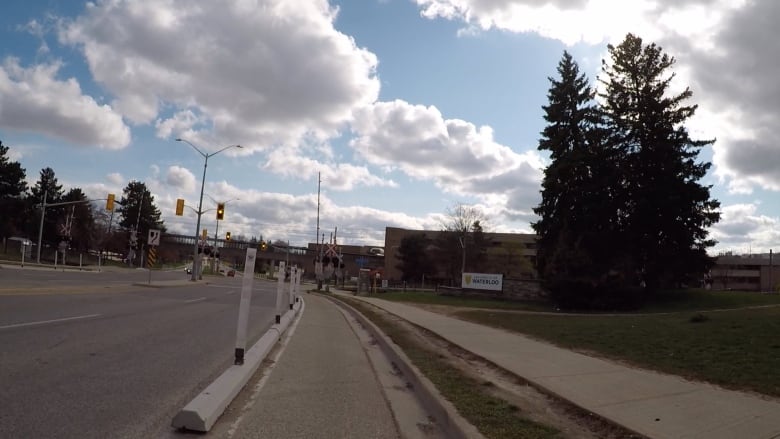Separated bike lane pilot project in Waterloo to become permanent
Number of cyclists on selected streets increased significantly during peak hours, region says

Separated bike lanes across the City of Waterloo, which were part of a pilot project, will become now be permanent.
Regional council voted Wednesday evening to end the pilot phase of the project by leaving the existing lanes in place and told staff to start plans on making the bike lanes permanent.
The pilot was launched in November 2019 on regional roads like Columbia Street, University Avenue, King Street N., Albert Street and Erb Street.
The separated bike lanes were implemented on streets that had a low number of cyclists, but had high potential for growth, according to a report presented to a committee of the whole on April 13.
Some streets were modified to have temporary curbs, bollards or planters.
During the pilot, the number of cyclists on the selected streets increased on average by 57 per cent and 105 per cent for morning and afternoon peak hours, according to the report.
"The dramatic increase, within the first year, points to the significant latent demand for higher quality cycling facilities," the report said.
Going forward, staff will explore ways to reduce winter maintenance costs of the separated bike lanes through different maintenance delivery.
"The facilities received a high level of winter maintenance," the report said, adding it was "challenging and costly."
The region will also look at developing a functional design and the cost of making the project permanent with lower operating costs going forward.